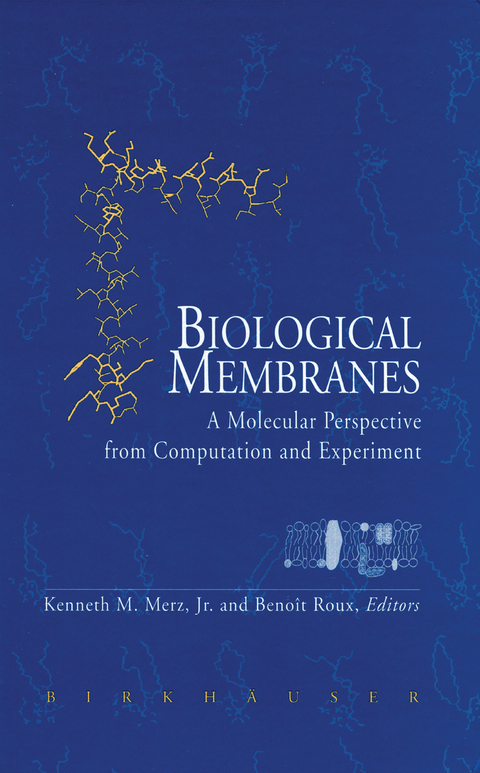
Biological Membranes
Birkhauser Boston Inc (Verlag)
978-1-4684-8582-0 (ISBN)
I: Computational Issues Regarding Biomembrane Simulation.- 1. Time Scales of Lipid Dynamics and Molecular Dynamics.- 2. An Empirical Potential Energy Function for Phospholipids: Criteria for Parameter Optimization and Applications.- 3. Statistical Mechanics and Monte Carlo Studies of Lipid Membranes.- 4. Strategic Issues in Molecular Dynamics Simulations of Membranes.- II: Experimental Probes of Biomembrane Structure and Dynamics.- 5. The Liquid-Crystallographic Structure of Fluid Lipid Bilayer Membranes.- 6. Infrared Spectroscopic Determination of Conformational Disorder and Microphase Separation in Phospholipid Acyl Chains.- 7. Membrane Structure and Dynamics Studied with NMR Spectroscopy.- III: Small Molecules and Peptides in Biomembranes.- 8. Movement of Small Molecules in Lipid Bilayers: Molecular Dynamics Simulation Studies.- 9. Structural Basis and Energetics of Peptide Membrane Interactions.- 10. Computational Refinement Through Solid State NMR and Energy Constraints of a Membrane Bound Polypeptide.- 11. Bilayer-Peptide Interactions.- IV: Membrane Proteins.- 12. Peripheral Membrane Proteins.- 13. Thermodynamics of the Interaction of Proteins with Lipid Membranes.- 14. Role of Lipid Organization and Dynamics for Membrane Functionality.- 15. Prediction of the Structure of an Integral Membrane Protein: The Light-Harvesting Complex II of Rhodospirillum molischianum.- 16. Monte Carlo Models of Spontaneous Insertion of Peptides into Lipid Membranes.- 17. Molecular Dynamics of Pf1 Coat Protein in a Phospholipid Bilayer.
| Zusatzinfo | 2 Illustrations, color; 116 Illustrations, black and white; 500 p. 118 illus., 2 illus. in color. |
|---|---|
| Verlagsort | Secaucus |
| Sprache | englisch |
| Maße | 155 x 235 mm |
| Themenwelt | Medizin / Pharmazie |
| Naturwissenschaften ► Biologie | |
| ISBN-10 | 1-4684-8582-2 / 1468485822 |
| ISBN-13 | 978-1-4684-8582-0 / 9781468485820 |
| Zustand | Neuware |
| Haben Sie eine Frage zum Produkt? |
aus dem Bereich


